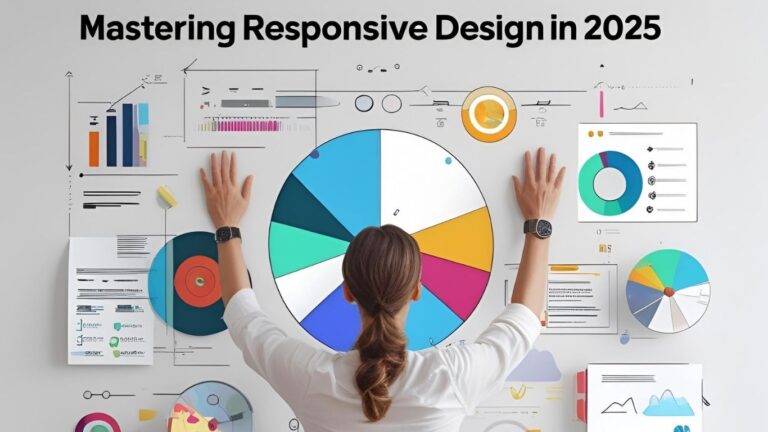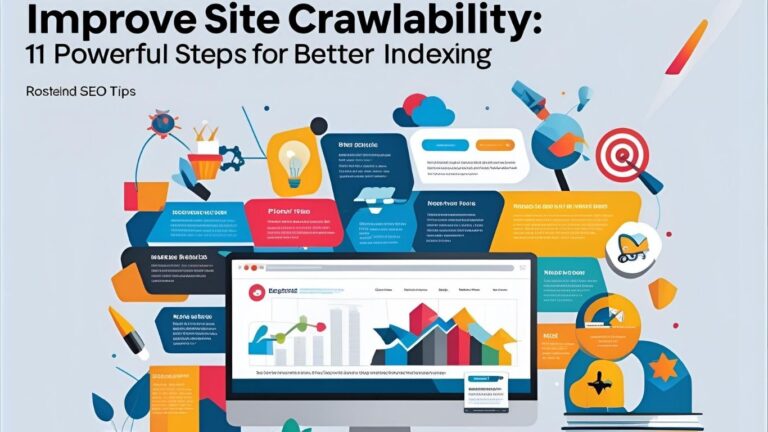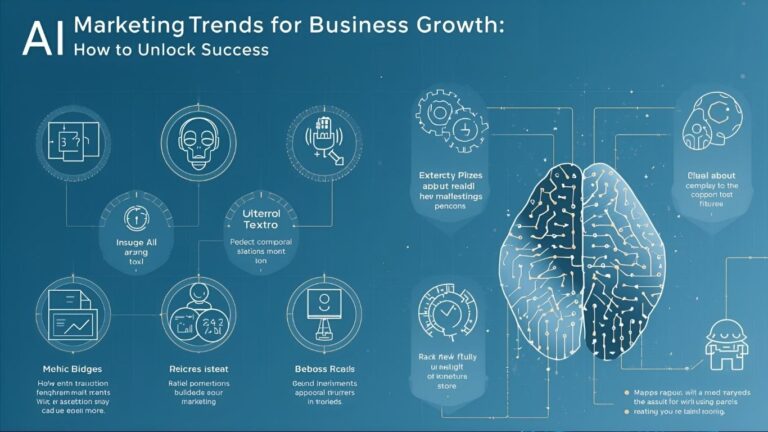5 Steps to Website Redesign: Tips for a Powerful Transformation #WebDesign #RedesignTips #SiteTransformation
Website Redesign Tips: 5 Simple Steps to Transform Your Site
In today’s fast-paced digital world, a website’s design can make or break a business. If your website feels outdated, lacks functionality, or isn’t performing as expected, a redesign could be the game-changer you need. Website redesign tips can help guide you through this journey, ensuring your new site is not only visually stunning but also functional, user-friendly, and optimized for SEO.
Whether you’re a seasoned entrepreneur or someone new to the digital space, revamping your website might feel like a daunting task. But trust me, with the right strategy, it doesn’t have to be. In this guide, I’ll walk you through the essential steps to redesign your site effectively, boosting both user engagement and your search engine rankings. Ready? Let’s dive in!
Step 1: Assessing Your Current Website
Before embarking on the redesign journey, it’s essential to take a step back and evaluate your existing website. Without this assessment, how will you know what needs to be fixed or improved? Website redesign tips begin with a solid foundation — understanding where you’re starting from.
Conducting a Site Audit
A site audit is the first critical step in identifying the areas of your website that need work. Think of it as giving your website a check-up. Is it slow to load? Are there broken links? Are your pages well-organized, or does the navigation confuse visitors?
Use tools like Google Analytics and Google Search Console to get insights into your website’s current performance. These tools will help you identify the pages with the highest bounce rates or the longest loading times.
Identifying Design and Function Gaps
While a site audit will reveal technical issues, identifying design and functional gaps requires a more subjective analysis. For instance, is your website aesthetically pleasing? Does the design align with your brand identity? Is the user interface intuitive?
Website redesign tips emphasize the importance of making your site visually engaging while being easy to navigate. A website’s design should reflect your brand’s values and make it easy for visitors to take the next steps — whether that’s making a purchase, filling out a form, or simply learning more.
Analyzing User Experience
The ultimate goal of a website redesign is to improve the user experience (UX). To do so, you must first understand how users currently interact with your site. Are there any friction points that make it hard for visitors to complete tasks?
Consider using heatmaps and session recordings to visualize where users are clicking, how they navigate through your pages, and where they might be dropping off. This information is invaluable when it comes to creating a user-friendly design.
Step 2: Planning Your Website Redesign
With a clear understanding of your current site’s shortcomings, it’s time to plan your redesign. This step is crucial because without a clear plan, you risk wasting resources or ending up with a site that doesn’t meet your objectives.
Defining Your Website Goals
Before getting into the technical details of the redesign, think about what you want to achieve. Why are you redesigning your website? Are you aiming to improve conversion rates? Is mobile optimization a priority? Or maybe you’re looking to make your website look more modern and align it with your current brand image?
When planning your redesign, website redesign tips include establishing clear, measurable goals. Set SMART (Specific, Measurable, Achievable, Relevant, and Time-bound) goals that will guide your design decisions.
Setting Design and SEO Objectives
A website redesign is a perfect opportunity to optimize your site’s performance on search engines. As you plan, ensure that both design and SEO objectives are aligned. Your design changes should enhance the user experience and also serve SEO purposes.
For example, improving page load speed can significantly boost your rankings. Optimizing content with targeted keywords, such as “website redesign tips,” is another key element to include.
Creating a Roadmap for the Redesign
Once you’ve defined your goals, create a detailed roadmap for your redesign. This should outline the phases of the project, deadlines, and the resources required. Whether you’re doing it in-house or hiring an agency, having a clear roadmap ensures that the process is smooth and avoids any last-minute surprises.
Step 3: Working with Web Designers
Choosing the right web designer or design team is one of the most important decisions you’ll make during your redesign journey. Your website is a direct reflection of your brand, and its design needs to make a lasting impression on visitors.
Choosing the Right Web Designer
When selecting a designer, look for someone with experience in both design and SEO. A designer who understands the intricacies of SEO can help ensure that your site is not only visually appealing but also optimized for search engines.
Check their portfolio, ask for references, and make sure they understand your goals and objectives. Website redesign tips often recommend interviewing multiple designers to ensure you’re hiring the best fit.
Key Questions to Ask Before Hiring
Before you sign a contract, ask the designer the following questions:
What’s your experience with SEO?
Can you integrate my current branding into the new design?
Will the website be mobile-responsive?
What’s your process for ensuring that the website loads quickly?
These questions will give you a better understanding of their capabilities and whether they’re a good fit for your needs.
Reviewing Design Proposals
Once you’ve found a designer, they’ll likely provide you with a proposal that outlines the design direction, cost, and timeline. Be sure to review the proposal thoroughly and make sure it aligns with your goals. Request mockups and wireframes to get a visual sense of the new design before committing to the project.
Step 4: Implementing SEO-Friendly Features
With the design in the works, now is the time to focus on SEO-friendly features that will boost your website’s performance on search engines. A beautiful website means nothing if it doesn’t perform well in search results.
Structured Data and Schema Markup
One of the website redesign tips you should consider is implementing structured data and schema markup. These features help search engines understand your website’s content better, which can lead to enhanced search results, like rich snippets.
For instance, if you have a blog post, you can mark it up as an article with relevant information like the author, publish date, and headline. This makes it easier for Google to display your content in search results.
Mobile-Friendly Design
With more people browsing the web on mobile devices than ever before, having a mobile-friendly design is no longer optional. A responsive design ensures that your website adjusts seamlessly to any screen size, improving user experience and search rankings.
Website redesign tips include making mobile optimization a priority in your redesign strategy. Google also prioritizes mobile-friendly websites in search rankings, so this is a key element you cannot ignore.
Creating Optimized Content for SEO
Content is king in the world of SEO. As you redesign your website, it’s essential to ensure your content is optimized for search engines. This means using relevant keywords (such as “website redesign tips”), writing compelling meta descriptions, and optimizing images with alt text.
Consider adding more valuable content to your site, like blog posts, case studies, or customer testimonials. These elements not only enhance SEO but also provide visitors with more information that could encourage them to take action.
Step 5: Launching and Maintaining Your New Website
After months of hard work, it’s time to launch your new site. But the work doesn’t stop there. Maintaining your website is just as important as the redesign process itself.
Pre-Launch Checklist
Before launching, double-check everything. Ensure that all pages are working correctly, and that all SEO elements are in place. Conduct a final round of testing to make sure everything is mobile-friendly and loads quickly.
Website redesign tips also include having a backup of your old website in case something goes wrong during the launch process.
Post-Launch Marketing Strategies
Once your site is live, it’s time to tell the world about it. Share the news on your social media platforms, send out an email newsletter to your subscribers, and even consider running ads to drive traffic to your new site.
This is also a good time to start building backlinks to your website, which will help improve your SEO rankings.
Ongoing Website Maintenance Tips
Your website is not a set-it-and-forget-it project. To keep it running smoothly, you need to maintain it regularly. Update content, monitor performance, and make improvements as needed.
Remember, the digital landscape is constantly changing, and your website should evolve to stay relevant. Website redesign tips include regularly reviewing your site’s performance and updating content to keep things fresh.
Conclusion: Redesign Your Website Today
Redesigning your website is an exciting opportunity to take your online presence to the next level. By following these website redesign tips, you can ensure that your new site is not only aesthetically pleasing but also functional, user-friendly, and SEO-optimized.
Remember, the redesign process is an investment in your business’s future. Don’t rush it. Take the time to plan carefully, work with the right professionals, and continuously improve your site. Your website will become a powerful tool that attracts visitors, engages them, and helps your business grow.
5-15 Bullet-Point Summary
- Website redesign is essential for improving user experience, increasing conversions, and boosting SEO.
- Start by conducting a thorough site audit to identify current issues like slow load times and broken links.
- Set clear goals for your redesign, including SEO and user experience objectives.
- Align design goals with SEO objectives, such as improving page speed and mobile optimization.
- Work with an experienced web designer who understands both design and SEO principles.
- Conduct thorough research to ensure the website design reflects your brand and enhances usability.
- Implement structured data and schema markup for better search engine visibility.
- Make sure your website is mobile-friendly, responsive, and loads quickly.
- Optimize content with relevant keywords and ensure metadata is SEO-friendly.
- Plan a pre-launch checklist to ensure everything is working properly before going live.
- Post-launch marketing strategies include promoting the site via social media and email newsletters.
- Regular website maintenance is crucial for staying competitive and SEO-optimized.
- Analyze user experience using heatmaps and session recordings to continually improve your site.
- Ensure your site reflects the latest web design trends to remain current and attractive.
- Update your site regularly with fresh content and make improvements based on analytics.
FAQs with Answers
Why should I redesign my website?
Redesigning your website helps enhance user experience, improve SEO, and align your design with modern trends. An updated website can drive more traffic, increase conversions, and improve overall business performance.
How often should I redesign my website?
It’s recommended to redesign your website every 2–3 years to keep it fresh, responsive, and aligned with current trends and technological advancements.
What are the most important things to focus on during a website redesign?
Focus on user experience, SEO optimization, mobile responsiveness, and clear navigation. Your website should be visually appealing and easy for users to navigate.
How do I ensure my website is mobile-friendly?
Use responsive design, ensure fast load times, and make sure that buttons and content are easily accessible on smaller screens. Google also prioritizes mobile-friendly sites in search rankings.
How can I measure the success of my website redesign?
Monitor key metrics such as bounce rate, conversion rates, page load time, and overall traffic. Use Google Analytics to assess performance after the redesign.
What is the role of SEO in website redesign?
SEO is critical in redesigns. Incorporating SEO best practices, like optimizing meta descriptions, images, and content, ensures higher search engine visibility and better user experience.
How long does a website redesign take?
The timeline for a redesign can vary based on complexity but typically ranges from 4 to 12 weeks. This includes planning, design, development, and testing.
Can I redesign my website on my own?
If you have the skills, you can redesign your website, but it’s usually best to hire a professional web designer who understands both design and SEO.
What’s the cost of a website redesign?
The cost depends on factors like website complexity, features, and the designer’s rates. A basic redesign can cost a few thousand dollars, while a complex redesign may go beyond that.
Should I keep the same content after a redesign?
Ideally, you should keep valuable content but optimize it for SEO. The redesign process is a great opportunity to refresh and enhance your content.
What is schema markup, and why is it important?
Schema markup is structured data that helps search engines better understand your content. Implementing it enhances search engine visibility and can lead to richer search results.
How do I ensure my website loads quickly?
Compress images, optimize your website’s code, use caching, and choose a reliable hosting service to ensure fast load times.
What are the benefits of a website redesign for SEO?
A website redesign offers the chance to optimize SEO, including improving site structure, speeding up loading times, and making your site more mobile-friendly, which boosts rankings.
How do I integrate social media into my website redesign?
Add social media icons, create shareable content, and integrate social proof to encourage visitors to engage with your brand across platforms.
What should be included in a post-launch website marketing strategy?
Promote your redesigned website through email marketing, social media, and online ads. Additionally, ensure that you’re tracking site performance and making adjustments where needed.
Informative Links for Enhanced Understanding
Google’s Webmasters Blog: Stay up-to-date with the latest search engine trends, tips, and updates directly from Google.
Moz Beginner’s Guide to SEO: A comprehensive guide for beginners, explaining the fundamentals of SEO and how it works to boost website rankings.
W3C Web Accessibility Guidelines: Learn how to design your website to meet accessibility standards, making it more inclusive and usable for all visitors.
Explore These Valuable Resources
Smashing Magazine – Web Design: Find insightful articles, tutorials, and best practices for web design and development.
HubSpot Blog on Web Design: A resource for tips and strategies to improve your website’s performance, usability, and lead generation.
Web.dev by Google: Learn practical tips and tools from Google to improve your website’s performance, accessibility, and SEO.
Recommended Reading for In-Depth Knowledge
Neil Patel’s SEO Guide: Explore one of the leading SEO experts’ comprehensive guides to understanding search engine optimization.
A List Apart – Web Design Articles: A trusted source for articles on web standards, accessibility, and best design practices.
CSS-Tricks: Master front-end design with tutorials and guides on CSS, HTML, and JavaScript.
External Links to Expand Your Understanding
Canva’s Website Design Resources: Enhance your website design skills with easy-to-follow tutorials and tips.
Yoast SEO Blog: Discover SEO strategies and best practices for creating content that ranks.
UX Design – UX Collective: A comprehensive blog dedicated to user experience design, offering deep insights into best practices and trends.
Unlock More Knowledge with These Links
Smashing Magazine – Mobile Web Design: Learn mobile-specific web design tips to create responsive and fast-loading websites.
Search Engine Journal’s SEO Articles: Stay informed on the latest SEO trends and strategies that will improve your website’s ranking and visibility.
Enhance Your Learning with These Resources
Google Search Console Help: Get a deep understanding of Google Search Console to help you monitor and optimize your website’s performance.
Shopify Blog on Website Optimization: Learn how to optimize your eCommerce website for conversions and better user experience.
Dive Deeper with These Informative Links
Ahrefs Blog on SEO: Learn advanced SEO techniques and strategies to boost your website’s search visibility.
UXPin Blog on Design Systems: Delve deeper into the principles and applications of design systems in modern web design.
Expand Your Horizons with These Links
Awwwards – Web Design Inspiration: Explore the best web design projects from around the world for inspiration.
Designmodo Blog: A source of useful articles and tutorials on web design, development, and UX.
Go Beyond with These Insightful Resources
Fast Company – Web Design Articles: Stay ahead of design trends and explore the intersection of web design and business innovation.
Web Designer Depot: A blog offering design inspiration, web design tutorials, and industry news.
Discover More with These Expert Resources
Webflow University: Explore Webflow’s free courses on web design and development.
Medium – Design Articles: Learn about the latest design concepts and trends through insightful articles written by industry experts.
Learn from the Best with These References
CSS-Tricks – Responsive Design: Master responsive web design techniques for all device types using CSS.
Adobe XD Ideas: Dive deep into design systems, prototyping, and other topics related to user-centered design and Adobe XD tools.
Broaden Your Knowledge with These Sources
The Interaction Design Foundation: Access a wide range of courses and articles on user experience, interaction design, and human-centered design principles.
Smashing Magazine – CSS & HTML Tips: Explore advanced CSS tips and tricks to create elegant, responsive websites.
Access Cutting-Edge Knowledge Through These Links
Wix Blog – SEO for Web Design: Learn how to integrate SEO into your website design for better ranking and search visibility.
CreativeBloq – Web Design Trends: Stay updated with the latest web design trends to keep your website ahead of the curve.
Learn from Industry Leaders with These Resources
Marketo Blog – Digital Marketing: Learn from the best in digital marketing to grow your website’s reach and traffic.
The Verge – Tech News: Stay updated on the latest technology trends that impact web development and design.
Stay Ahead with These Trend-Setting Links
WebDevStudios – WordPress Design & Development: Gain insights into WordPress design and development to enhance your website’s performance and design.
Web Design Ledger: Explore industry-leading web design articles that inspire and guide you to create better digital experiences.
Blog Recommendation
If you found these website redesign tips helpful, be sure to check out Rizwan’s Blog for more insights on web development, SEO, and digital marketing strategies. Dive deeper into the latest trends to stay ahead in the competitive digital world!






